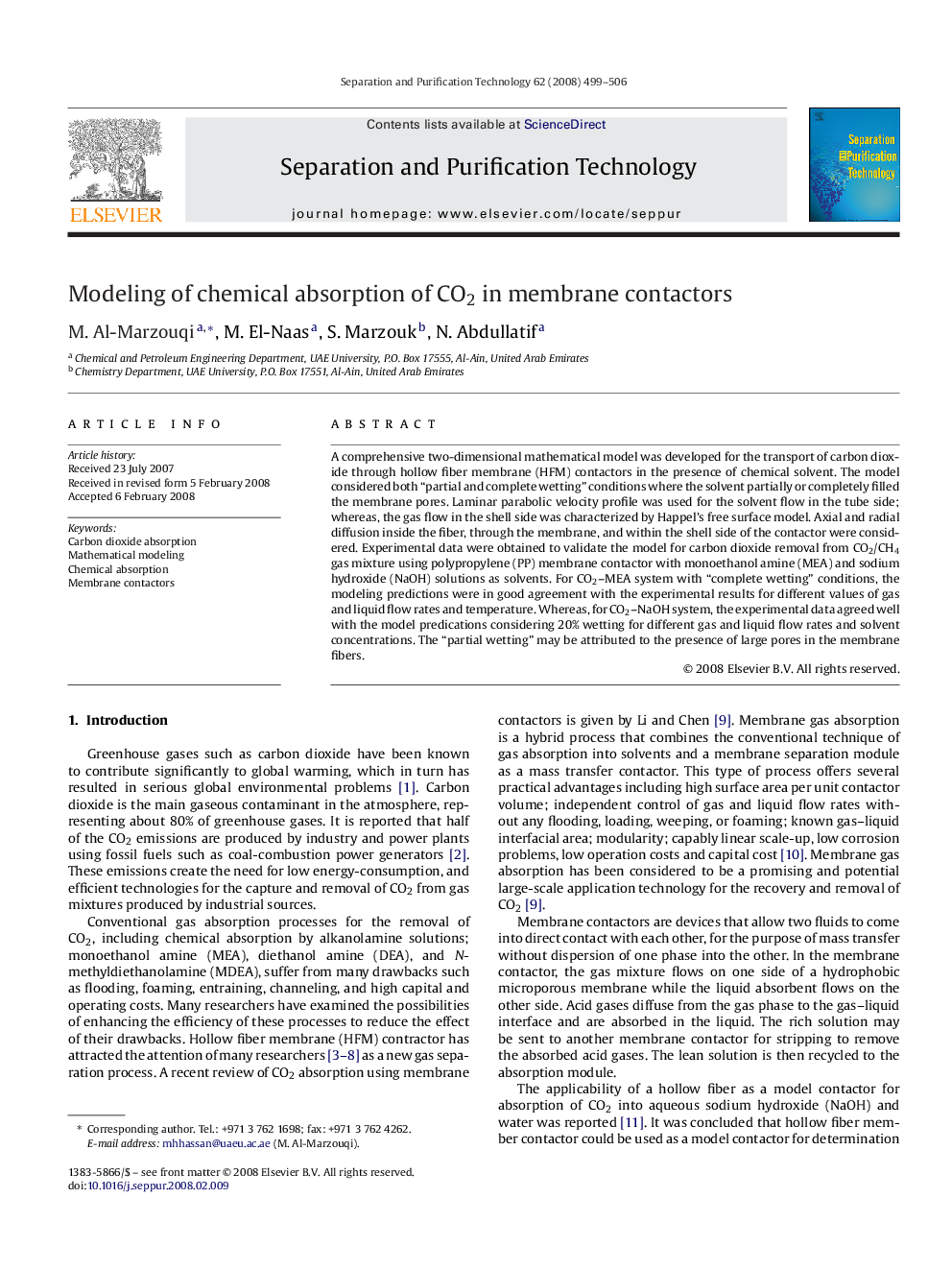| Article ID | Journal | Published Year | Pages | File Type |
|---|---|---|---|---|
| 643551 | Separation and Purification Technology | 2008 | 8 Pages |
A comprehensive two-dimensional mathematical model was developed for the transport of carbon dioxide through hollow fiber membrane (HFM) contactors in the presence of chemical solvent. The model considered both “partial and complete wetting” conditions where the solvent partially or completely filled the membrane pores. Laminar parabolic velocity profile was used for the solvent flow in the tube side; whereas, the gas flow in the shell side was characterized by Happel's free surface model. Axial and radial diffusion inside the fiber, through the membrane, and within the shell side of the contactor were considered. Experimental data were obtained to validate the model for carbon dioxide removal from CO2/CH4 gas mixture using polypropylene (PP) membrane contactor with monoethanol amine (MEA) and sodium hydroxide (NaOH) solutions as solvents. For CO2–MEA system with “complete wetting” conditions, the modeling predictions were in good agreement with the experimental results for different values of gas and liquid flow rates and temperature. Whereas, for CO2–NaOH system, the experimental data agreed well with the model predications considering 20% wetting for different gas and liquid flow rates and solvent concentrations. The “partial wetting” may be attributed to the presence of large pores in the membrane fibers.
